What an exciting and unpredictable 2016-17 that was, and, oh by the way, that's old news. It's time to talk about 2017-18, specifically which players will dominate the game next season.
First, a word about who's not here. Some players have already declared for the draft, but a number of decisions have yet to be made. Based on Chad Ford's Top 100 and comments from the players and their coaches, this is my working list of 41 non-seniors who might not be playing college basketball next season and thus aren't ranked in my Top 25:
Edrice Adebayo, Grayson Allen, Jarrett Allen, Ike Anigbogu, OG Anunoby, Dwayne Bacon, Lonzo Ball, Jordan Bell, Miles Bridges, Isaiah Briscoe, Thomas Bryant, John Collins, Zach Collins, Bonzie Colson, Jawun Evans, Markelle Fultz, Harry Giles, Jonathan Isaac, Josh Jackson, Justin Jackson, Andrew Jones, Luke Kennard, TJ Leaf, Tyler Lydon, Lauri Markkanen, Eric Mika, Donovan Mitchell, Malik Monk, Johnathan Motley, Semi Ojeleye, Justin Patton, Ivan Rabb, Dennis Smith Jr., Edmond Sumner, Caleb Swanigan, Jayson Tatum, Allonzo Trier, Melo Trimble, Moritz Wagner and D.J. Wilson.
Obviously, we don't know that every single one of those guys really will go pro, but the list is made up exclusively of non-seniors who would not shock us if they did. Understood?
Now, here is my 1.0 list of the Top 25 players of 2017-18 -- and as always, we are speaking of college production as opposed to pro potential:

1. Dillon Brooks, Oregon Ducks
For devotees of continuity, Brooks is a relatively straightforward pick as next year's preseason Wooden Award favorite. If nothing else, he's the reigning major-conference POY most likely to return next season. Certainly, Brooks could opt to leave -- he considered it last season -- but after the Ducks' loss to North Carolina in the Final Four, the junior did not rule out a return. If he does come back, Brooks will give coach Dana Altman a high-volume, featured scorer who recorded a better effective field goal percentage than Josh Jackson, Justin Jackson, Malik Monk and Nigel Williams-Goss.

2. Michael Porter Jr., Missouri Tigers
Missouri will have to make one of the largest season-to-season turnarounds we've seen in a while to earn an at-large NCAA tournament bid in 2018. If that sounds as if Porter is following a path laid down by Ben Simmons and Markelle Fultz, it's likely the Tigers freshman will indeed hear those names invoked from time to time. Then again, new coach Cuonzo Martin's 6-foot-10 star is drawing pretty fair comparisons to a Texas freshman from a decade ago. Are such comparisons simply the kind of hype endemic to the one-and-done process itself? Of course. Still, Lonzo Ball did turn out to be pretty good as a freshman, even if his dad does say so. Stay flexible.

3. Nigel Williams-Goss, Gonzaga Bulldogs
Williams-Goss was the quartz movement at the heart of one of the nation's best offenses in 2016-17. His 23-point effort on 9-of-16 shooting played a significant role in Gonzaga's being the first NCAA tournament opponent to survive South Carolina's patented (and remarkable) second-half surge. Assuming he does return, Williams-Goss will give coach Mark Few a proven distributor with good size who can hit shots from either side of the arc and is often underrated on defense.
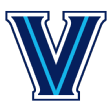
4. Jalen Brunson, Villanova Wildcats
As a sophomore, Brunson inherited the point guard role formerly filled by Ryan Arcidiacono, and did so with such success that few observers noticed or remarked upon the transition. For a fourth consecutive season, Villanova made a ridiculous proportion of its shots and won the Big East regular-season title by at least two games. Brunson played no small part in extending that streak, and his ability to create his own looks at the rim will continue to benefit both him and the Wildcats.
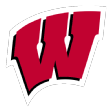
5. Ethan Happ, Wisconsin Badgers
It would be tempting to declare that Wisconsin is Happ's team now, but the junior-to-be is likely already near the upper limit of what a Big Ten post scorer will receive from his coach in terms of workload. It might be more accurate to say that -- given the departures of Nigel Hayes, Bronson Koenig, Zak Showalter and Vitto Brown -- Happ's production in close proximity to the basket will pad the assist totals of some new recipients. Who knows, maybe Happ can sustain the 62 percent foul shooting he flashed in Wisconsin's six-game postseason (up from 47 percent during Big Ten play).

6. Jock Landale, Saint Mary's Gaels
The only question with Landale is whether he can improve on a junior-year performance that was fairly close to the Platonic ideal for a player who doesn't try 3s. As a junior, he was the featured scorer in an offense that might have attracted more notice if not for a certain team in Spokane. Landale converted 63 percent of his 2-point attempts at a very high volume and did so as one of the nation's finest all-around rebounders.

7. DeAndre Ayton, Arizona Wildcats
Ayton has been described as "the highest-rated signee in Arizona basketball history," which is saying something given coach Sean Miller's track record in recruiting. The 7-footer grabbed 11 rebounds (including nine offensive boards) in just 20 minutes in the McDonald's All American Game last week. As a senior at Hillcrest Prep, Ayton averaged a 21-16 double-double.

8. Trevon Bluiett, Xavier Musketeers
While Bluiett has announced that he will gauge the NBA's interest, he hasn't hired an agent and could return to coach Chris Mack's roster in 2017-18. If that occurs, Mack has to be enthusiastic about the prospect. Bluiett lit up a highly esteemed Cincinnati defense -- on the road -- to the tune of 40 points on 12-of-16 shooting in January. Moreover, in Xavier's run to the Elite Eight, the junior averaged 25 points per contest in NCAA tournament games against Maryland, Florida State and Arizona. He scored just 10 in the season-ending loss to Gonzaga

9. Tyler Dorsey, Oregon Ducks
For the balance of Oregon's NCAA tournament run, Dorsey performed at a level most players can only imagine. In games against Iona, Rhode Island, Michigan and Kansas, the sophomore shot percentages in the upper 60s on both 2s and 3s while averaging 24 points per game. That type of performance won't continue for all of 2017-18, needless to say, but it does give an indication of Dorsey's exceptional ability.
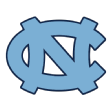
10. Joel Berry II, North Carolina Tar Heels
Berry repeatedly rolled his ankle during the Tar Heels' tournament run, depriving a wider hoops audience of the chance to witness the point guard at top speed. During the regular season, the junior was the low-turnover motor at the center of coach Roy Williams' high-shot-volume and high-velocity offense. A 39 percent shooter on 3s, Berry teamed with Justin Jackson to form arguably the most potent 3-point duo in UNC history.

11. Wendell Carter, Duke Blue Devils
Carter is a 6-foot-10 power forward who logged impressive numbers in just 10 minutes per game with the U.S. team that won gold at the FIBA U17 world championship last summer. In particular, the incoming freshman's ability to crash the offensive glass and play defense in an international setting could presage a hopeful turn of events for a Duke team that has suffered drop-offs in both categories relative to its 2014-15 title season.
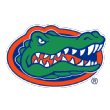
12. Devin Robinson, Florida Gators
A decision to stay in the draft wouldn't be a stunner for the 6-foot-8 Robinson. But if he returns for his senior season in Gainesville, he'll continue what to date has been an encouraging three-season evolution. Ever since he was a freshman playing for former coach Billy Donovan, Robinson has been a reliable source of points inside the arc. What's changed under coach Mike White, however, is that Robinson is now hitting 39 percent of his 3s.
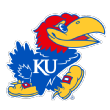
13. Devonte' Graham, Kansas Jayhawks
At the risk of placing unfair expectations on Graham, there are some elements (repeat, some elements) of All-American Frank Mason III's year-to-year progression over the past two seasons that could recur with respect to Graham. Just as Mason supported Perry Ellis on offense in 2015-16, Graham performed a similar role alongside his senior backcourt mate, Mason, this past season. Moreover, the junior's production inside the arc has improved with each succeeding season, and he's a career 41 percent 3-point shooter.

14. Frank Jackson, Duke Blue Devils
Jackson started Duke's last eight games, and his ascension coincided with a moment when many observers thought the Blue Devils were finally living up to their preseason No. 1 ranking. We now know it didn't turn out that way, but the decision to start the freshman was sound. His shot selection is excellent, and though Jackson coughed up five turnovers against South Carolina in the NCAA tourney, his stewardship of the ball against less formidable defenses (i.e, the rest of D-I, more or less) suggests big things to come for the point guard. Certainly, he won't lack for teammates who can boost his assist totals.

15. Trevon Duval, Uncommitted
As the highest-rated point guard in the Class of 2017, the 6-foot-3 Duval is considering offers from Duke, Kansas, Arizona, Baylor and Seton Hall. He's billed as a slashing lead guard who can finish at the rim. True, there was a time when a reader might have paused over the line in the scouting report that says Duval is still working on his jumper. No longer. We are in a post-De'Aaron Fox world. If a point guard has good size, takes care of the rock and creates his own chances at the tin, we know from experience that he adds measurable value to an offense that can get its 3s elsewhere.

16. Kelan Martin, Butler Bulldogs
The Butler offense has featured Martin virtually since day one of his career in Indianapolis, even when he was a freshman coming off the bench who didn't get that many minutes. This season the junior logged big numbers for possession usage, fouls drawn and defensive boards, while posting small figures for turnovers. Martin rounded out February (and, perhaps, previewed 2017-18) by going off for a combined 47 points on 16-of-26 shooting in back-to-back road wins at Villanova and Xavier.

17. Landry Shamet, Wichita State Shockers
If the reports are correct and Wichita State jumps to the American Athletic Conference, the Missouri Valley's defenses will not be entirely sorry to see Shamet depart. The freshman put up numbers during conference play that were nothing short of ridiculous. Shamet posted 62 percent shooting on 2s and 52 percent on 3s, and again, this was over the course of 18 games. Replacing Fred VanVleet is no task for the faint of heart, but coach Gregg Marshall's point guard is well on his way to forging his own path.

18. Nick Ward, Michigan State Spartans
Ward's per-minute numbers in limited playing time as a freshman ensure that he will be at or near the top of every list for breakout sophomores next season. Rightfully so: Coach Tom Izzo's post scorer was striking in spots on both sides of the ball this past season. He will enter 2017-18 as the presumptive best offensive rebounder in the nation, and his rim defense is already outstanding.

19. Mohamed Bamba, Uncommitted
With a listed wingspan of 7-foot-9, Bamba's height is almost beside the point. (Though, for the record, it's 7-foot.) A freshman with a global sphere of influence on defense can alter the environment in the paint significantly, provided he stays out of foul trouble and gets to the right spots. Bamba could fit that profile. Plus, his 7-of-10 shooting to go along with four blocks and only one foul in 17 minutes at the McDonald's All American Game is just a snapshot, but at least a supportive one. His short list is down to Kentucky, Duke, Michigan and Texas.

20. Angel Delgado, Seton Hall Pirates
If the hoops gods in their Valhalla somewhere in the clouds, and/or the Seton Hall coaching staff in their offices in South Orange, New Jersey, had possessed a little more scheduling imagination last summer, we could have seen Delgado head-to-head and toe-to-toe against players such as Purdue's Caleb Swanigan or North Carolina's Kennedy Meeks. The Pirates would have been neutral-floor underdogs in both would-be NCAA tourney games (in actuality, they fell to Arkansas in the first round), but the real show would have been the battle for rebounding supremacy. The 6-foot-10 Delgado is possibly the game's best all-around rebounder, and he holds that title while averaging 33 minutes a game.
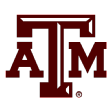
21. Robert Williams, Texas A&M Aggies
The NBA loves Williams, and it's not too difficult to find mock drafts that project the 6-foot-9 power forward as a 2018 lottery pick. Accordingly, the freshman was a force of nature on the offensive boards, and his numbers would likely have been higher still if he hadn't played alongside a fellow master of the art in Tyler Davis. (Naturally, Davis gets the same disclaimer on his offensive rebound rate.) The one drama to watch with Williams will be the inevitable pressure to prove he can stretch the floor. No signs of a breakthrough on that front yet, but if Kawhi Leonard's college and pro stats (25 percent on college 3s, 39 percent on NBA 3s) have taught us anything, it's to never say never.
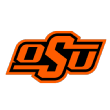
22. Jeffrey Carroll, Oklahoma State Cowboys
You can make a somewhat heretical case that Carroll's season was surprisingly similar to Josh Jackson's season at Kansas, the only difference being the severe drop in fanfare one would forecast for a player who's two years older and 2 inches shorter than the one-and-done guy. (Granted, they're not identical performance twins. Jackson is plainly the superior passer, and Carroll is head and shoulders better at the line.) Can the Cowboys wing repeat that tour de force as a senior under new coach Mike Boynton now that an efficiency guru such as former coach Brad Underwood has moved on to Illinois? We're about to find out.

23. Cameron Oliver, Nevada Wolf Pack
Nevada lost to Iowa State by 11 in the round of 64, but fans who chose to watch a not terribly suspenseful game gained a fair appreciation of what Oliver can do. Against a No. 5 seed from the Big 12, the 6-foot-8 sophomore rang up 22 points (including four 3s) to go with seven boards and four blocked shots. Oliver shot 38 percent from outside the arc this season on a healthy volume of attempts, making him the only player in Division I who made 60 or more 3s while blocking at least 90 shots. Coach Eric Musselman hopes for similar production next season.
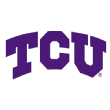
24. Vladimir Brodziansky, TCU Horned Frogs
Prepare to hear a good deal about TCU in the offseason. In effect, coach Jamie Dixon will return all five starters from a team that just won the NIT, and Brodziansky in particular, could be poised for a breakout senior season. The 6-foot-11 shot-blocker is a true renaissance man, and he led the Big 12 in free throw accuracy (87 percent) during conference play. In addition, the senior-to-be hits an occasional 3 and committed just seven turnovers as a featured scorer in 247 minutes across the entire month of March.
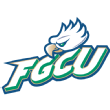
25. Brandon Goodwin, Florida Gulf Coast Eagles
Last seen putting up 28 points in a losing cause against Florida State in the round of 64, Goodwin converted 55 percent of his 2s against the following four opponents this season: FSU, Florida, Baylor and Michigan State. Put another way, his season-long 59 percent success inside the arc was no fluke. At the same time, the 6-foot-2 point guard improved his 3-point accuracy significantly as a junior while also making the leap from 60 percent to 79 percent shooting at the foul line.
